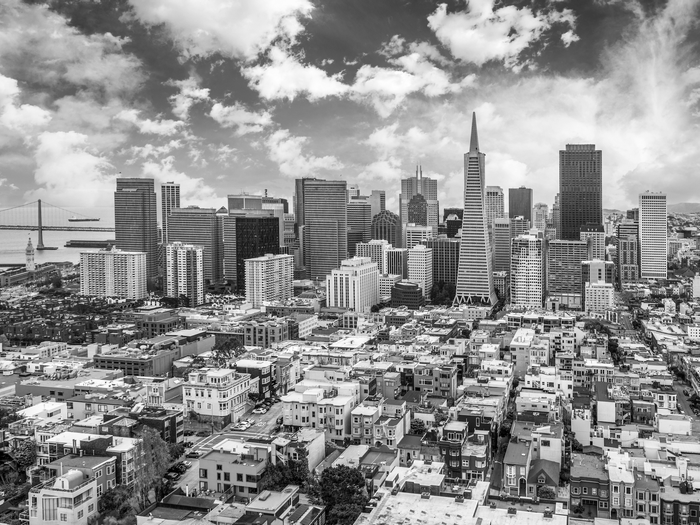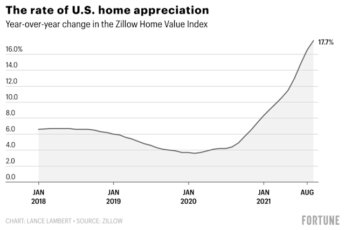If you’re considering moving to the Bay Area, you’ll likely be asking yourself: «Why is it so expensive to live in San Francisco?» There are a variety of factors that contribute to this high price tag. San Francisco’s population is growing because of the tech industry, and many of these companies pay six-figure salaries. The high salary levels of these employees help them afford higher prices for housing.
Cost of living
The cost of living in San Francisco is high. However, with many well-paying jobs, the cost of living can be supported. In addition to the high cost of living, the city has many options for public transportation, which makes it easy to get around without a car. However, traffic in San Francisco can be frustrating and it’s important to consider these factors when planning your move. Here are some tips to help you reduce your costs in San Francisco.
Utility costs are lower than the rest of the country. A typical 30-year mortgage will cost around $2,812 per month, which is only 46% of the average annual salary. San Francisco also has affordable, no-credit-check apartments, which are an excellent option for first-time renters. For people with low credit scores, a for rent by owner apartment may be a better choice. These rentals are usually more personal and will allow you to form a relationship with the owner.
The biggest expense for residents in San Francisco is housing. Rent in SF is about $3,700, whereas in Manhattan, the average rental is $4,210. The most expensive neighborhoods in San Francisco are those in newly developed areas, such as SoMa and Mission Bay. You can find more affordable neighborhoods on the southern and western edges of the city. The average rent in Outer Sunset and Outer Mission/Excelsior is around $2,400.
The cost of living in San Francisco is relatively high, especially for students. It is almost twice as expensive as the average US city. A single person can expect to spend about $3,460 per month, or $4,632 per year. This is just over six percent of the median income. However, housing in San Francisco is also much more affordable than rent in other cities. If you can afford it, you can enjoy the city’s culture, traditions, and job opportunities without breaking the bank.
Gas prices in San Francisco are expensive as well. According to GasBuddy, the average price of gas in San Francisco in May 2019 is $4.20. It is the most expensive city in California and the most expensive state in the U.S. when it comes to fuel. A single individual living in San Francisco should budget for this cost. If you are looking to relocate to this area, here are some tips to help you with your relocation.
Taxes
There are many reasons why San Francisco is so expensive to live in, but one of the most common is the city’s zoning laws. These zoning laws have severely limited the supply of housing, which in turn has led to higher prices. In addition to this, San Francisco also requires that all new construction include affordable housing, which further drives up prices. In addition, housing regulations in the city are extremely strict, preventing people from building new homes in most areas.
Despite the city’s high cost of living, the median income is $100,000, but a single person in San Francisco can expect to spend nearly $69,072 per year on necessities. The median income for a worker in the US is $53,390, which is much less than the monthly cost in San Francisco. According to the Economic Policy Institute, living expenses in San Francisco include housing, food, transportation, and taxes. This means that living in San Francisco is not for the poor.
Although San Francisco has one of the highest concentrations of wealthy residents in the entire country, the city still retains a community-like feel. Rent and salaries in San Francisco are much higher than in other parts of the United States. Many families cannot afford to raise a family in the city, so most move to more affordable cities. The city is a unique and charming place, but it is extremely expensive.
The city has limited space and is zoned for high-density housing, which means there are very few apartments and homes available for sale. Also, public transportation is not as developed as it is in other cities. San Francisco is also known as a tourist destination, which means that more people mean more demand for goods and services, which in turn raises prices. In the long term, house prices in the Bay Area will decrease.
Despite the high cost of living, San Francisco is an incredible place to live. The city is home to a professional football team, the Golden Gate Bridge, and numerous other iconic landmarks. The city also has a vibrant nightlife with hundreds of clubs and bars, live music, stand-up comedy, and dance clubs. However, San Francisco is also one of the most expensive cities in the world.
Housing prices
In recent years, San Francisco’s housing prices have soared in tandem with the city’s economic growth. Despite the shortage of available housing, the city continues to see a strong rental market, and its home prices are growing much faster than the average income. Rent is currently the highest in the country, with a CAGR of more than 11%. This is good news for renters in the city, but what does this mean for potential homebuyers?
The city hired a team to build a model to forecast housing prices in the future and determine how the crisis will affect the city’s economy. The team also needs to analyze the impact of proposed housing solutions on the city’s population, housing supply, and transportation, among other factors. They will then work to build a housing crisis model that takes these factors into account, and then compare the results to the city’s past data to forecast the future.
The housing market in San Francisco has recently rebounded from steep declines in March and April. The lack of inventory has made it difficult for many buyers to purchase a home. But despite the tight housing market, the affluent buyers have been largely untouched by the economic downturn. In fact, high-end luxury real estate has seen strong demand across the entire Bay Area. Although there are fewer home buyers, the price of a home in the Bay Area has consistently topped $1 million.
Housing prices in San Francisco have soared to a new record high of $1.8 million in June, up 3% from June’s previous monthly high of $1.75 million. Meanwhile, first-time homebuyers are purchasing homes with price tags of up to $2.5 million. Homelessness has a serious impact on a child’s development and the physical health of an adult. In addition to homelessness, high house prices make housing in San Francisco unaffordable for many working-class people and low-income families.
While a low median price for a home in San Francisco is a great sign of a rising market, the real value of a home in San Francisco is still comparatively high, despite being one of the most expensive housing markets in the world. The median home price in San Francisco is $1,489,691 — a 20.1% increase over the last year. Moreover, Zillow has yet to release its projections for the next year, and these are not necessarily indicative of future trends.
Rent vs buy calculator
A rent vs. buy calculator is a useful tool when deciding whether to buy or rent a property. While rent is often cheaper than other costs, it can also fluctuate in unpredictable ways. Since most San Francisco rent stock is rent controlled, the results will be lower if the home you want is newer or cheaper than five years old. However, it’s still important to remember that the results are based on current median home prices, which may be much higher or lower than that.
Property taxes are annual levies that homeowners pay to the ruling jurisdiction. You can find the exact figure by visiting the county’s website. Most homeowners pay between 1% and 3% of the value of their property annually. In San Francisco, you’ll need to input the annual tax due for the property you’re considering, and the percentage increase you’d expect over the next several years. This information is public, so it’s easy to get a quick picture of the cost of ownership.
The rent vs. buy calculator will calculate your estimated monthly payments based on factors such as the current rent, your down payment, your mortgage rate, PMI costs, and taxes. Additionally, it takes into account your estimated monthly expenses, as well as the costs of maintaining your home. If you choose to buy, you will be able to realize a substantial tax savings if you buy. Buying a home also provides a better sense of security.
While renting may seem like a better investment in the short term, the long-term financial benefits of home ownership can outweigh the cost of renting. After all, the cost of renting can’t compare with the cost of purchasing a home in San Francisco. After all, a rent vs buy calculator will help you make the best decision for your personal circumstances. This decision will ultimately depend on your preferences, plans, and finances.
The housing market in major cities is usually more competitive than in smaller towns. Potential homebuyers face higher prices, fees, and closing costs compared to buying a house in a rural area. Such high upfront costs only make financial sense for those who plan to stay in one location for several years. The recent rise of tech jobs and migration to sunny West Coast cities has shifted housing economics in favor of renting in some areas while favoring buying in others.
This disparity can be attributed to several factors. While the population of Palo Alto grew slowly compared to neighboring cities, home prices climbed at a slower rate. The housing market crashed and the COVID-19 pandemic were factors in the disparity. However, other factors also contribute to the disparity. The housing market crash and COVID-19 pandemic have both been responsible for a significant amount of racial inequality in Palo Alto.
Home prices rose sluggishly compared to neighboring cities
After incorporation, East Palo Alto struggled to make ends meet financially. It had relied on the San Mateo County Sheriff’s Office and other resources to fight crime. These practices left the area’s Latinx and black populations unable to save and pass along wealth to their children. But that didn’t stop residents from working creatively to address inequality and systemic cycles of poverty. Despite this, Camacho remains proud of the innovative efforts of the community to tackle poverty and inequality. Although she casts a critical eye to neighboring cities, she says things are looking up for her community.
While East Palo Alto’s housing prices grew slowly compared to neighboring cities, they did not fall nearly as fast as those in neighboring cities. In the 1950s, this community had a majority of black residents. William A. Bailey and his family moved to East Palo Alto Gardens in the neighborhood of East Palo Alto in 1954. Their arrival touched off a protest from neighboring white homeowners. A meeting of the Palo Alto Gardens Improvement Association that included 125 residents expressed outrage over a black family.
While housing prices have continued to rise in most cities, East and West Palo Alto have been particularly hard hit by the foreclosure crisis in the early 2000s. During the traumatic period, many residents lost their homes. During this time, the homeless population of East Palo Alto was estimated to reach 400 people. The city is home to approximately 28,000 people, and it has a commitment to provide affordable housing and renter protection laws.
Population grew slowly
The population of East and West Palo Alto, California, grew slowly over the last few decades. This is due in part to a lack of new housing. While Santa Clara County experienced a 9.2% population increase, East Palo Alto’s growth was much slower. This is because new housing has not kept pace with the population growth, causing longer commutes, rising prices, and displacement of lower-income residents. Additionally, lack of housing has contributed to a large number of homeless people in the area.
Although East Palo Alto’s housing prices have doubled since the bottom in 2012, the city continues to face a shortage of affordable housing. East Palo Alto residents and developers have debated the merits of living in the community. In the past, many employees of Facebook and other companies have discussed the benefits of East Palo Alto, but cannot afford the multi-million dollar homes in Mountain View. Despite these issues, East Palo Alto’s residents are proud of their progressive approach to addressing systemic inequality and poverty.
In 1954, the city’s population of East Palo Alto was primarily black. When William A. Bailey and his family moved into Palo Alto Gardens, it sparked a backlash from neighboring white homeowners. A packed meeting of the Palo Alto Gardens Improvement Association was held to express outrage at the new black families. Although it did not become a racial riot, the black community of East Palo Alto was able to build its own institutions in the 1950s.
As a separate entity, East Palo Alto grew slowly. At the time of incorporation, it was California’s youngest city. It was founded as an unincorporated village in 1856. Its residents elected a council made up of Ruben Abrica, James E. Blakey, and Mayor Barbara A. Mouton. During the following decades, many residents continued to demand incorporation, but the process was not successful.
Housing market crash
The housing market crash has left East-Palo Alto residents with less money than their White counterparts, and the disparity has only increased in recent years. The area’s population is predominantly white, and 25 percent of homes are sold to overseas buyers as investments. This exacerbated the racial divide and caused the mainland Chinese property market to crash. The lack of affordable housing has made it difficult for startups to move into the area, and gentrification has left its residents feeling displaced and undervalued.
The west side of East-Palo Alto is divided from the rest of the city by Highway 101. It is bordered by San Francisquito Creek and Embarcadero and Willow roads. There, Equity Residential, a publicly traded real estate investment trust, owns the majority of housing stock. In 2011, it bought out Page Mill Properties, which had defaulted on its loan.
The dot-com boom had boosted the area’s prospects, and the ensuing real estate boom pushed property prices sky-high and swelled the gap between rich and poorer neighborhoods. The boom also marked the beginning of East Palo Alto’s last major demographic change. Latino families began to move into the predominantly African-American city.
In the wake of the housing market crash, East-Palo Alto has made affordable housing a priority. It revised its rent stabilization ordinance in 2010 and passed a new law controlling condo conversions last year. Some city officials are also looking at ways to make responsible development a part of the city’s long-term plan. Many people in East Palo Alto can’t afford to live in the multi-million-dollar homes of their neighbors. Therefore, they’re advocating for more affordable housing and more job opportunities.
COVID-19 pandemic
A new report finds that the COVID-19 pandemic is causing a growing disparity in housing prices in East and Palo Alto, California. Low-income residents in these communities are more likely to experience gentrification and homelessness, while wealthier enclaves are predominantly white. This is particularly troubling because the state’s COVID-19 epidemic has already resulted in thousands of deaths and countless hospitalizations. However, in East Palo Alto, the disparity is even more pronounced.
The COVID-19 pandemic has been a concern for East Palo Alto residents for a while, and the city’s mayor, Regina Wallace-Jones, has pushed for a testing site in the area. Early detection is essential for recovery and early intervention. Project Baseline, a national health research initiative, offers COVID-19 screenings in 51 of California’s 58 counties. The East Palo Alto site has been testing people since May, with more than 6,800.
The City of East Palo Alto is investing in community-based efforts to address this disparity. Jobs are needed to keep residents of East Palo Alto out of poverty. As a result, the city has increased its workforce development programs and has expanded its services to meet the needs of its diverse community. Despite the influx of immigrants, however, the city’s housing shortage continues to affect East Palo Alto residents.
The City of East & Palo Alto has implemented a new policy that requires landlords to provide affordable housing to low-income families. The city also has an Opportunity to Purchase Act that grants tenants the first opportunity to purchase residential property. This policy, along with several other initiatives, may help alleviate some of the housing disparity issues that affect East Palo Alto.
Community-based policing
Residents of East-Palo Alto face a wide range of challenges, including drug addiction, violence associated with drugs, involvement in the criminal justice system, and destabilized families. There are no major supermarkets in East Palo Alto, and residents have a four-fold higher diabetes mortality rate than the rest of the county. Nearly half of fifth-graders are overweight. This disparity in health outcomes is exacerbated by a lack of resources, such as transportation and healthcare.
The resulting disparity in crime was so great that East-Palo Alto was able to incorporate as a city in 1983, but did so reluctantly for two decades. While there were concerns that it would not generate enough tax revenue, the city’s leadership, including representatives from Wilson Sonsini Goodrich & Rosati, pushed for incorporation, which ultimately sparked a discussion about the policing system in East Palo Alto.
Gentrification in East-Palo Alto was another reason for the disparity in crime. The city was once home to 80 percent of African-American families. Segregation and redlining forced them to migrate elsewhere, leaving a majority-white population. Today, East-Palo Alto brings in one-fifth of the sales tax per capita that its neighboring cities receive. And although it isn’t nearly as poor as Palo Alto, it is still a major contributor to the racial makeup of the area.
In 1978, East-Palo Alto’s residents took matters into their own hands. Some residents began monitoring street corners, taking down license plates of drug buyers, and reporting to the police. After six months, drug-related homicides dropped 86 percent. Meanwhile, some of Silicon Valley’s biggest companies and families began making charitable commitments to help the community. Some of them even helped children get into four-year-colleges.







